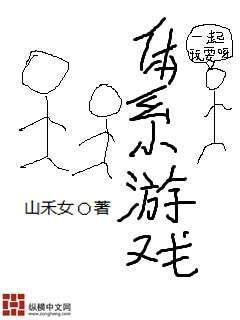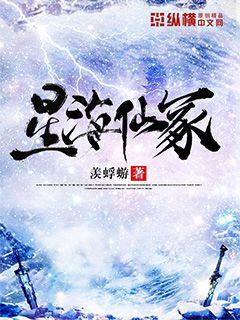
Certainly! Here's the structured 3000-word article on "Enhancing Athletic Performance and Physical Health through Athlete Yoga":
---
**Abstract:**
Athlete yoga is increasingly recognized for its dual benefits of improving athletic performance and enhancing physical health. This article explores how yoga contributes to these outcomes through four key aspects: flexibility and mobility, strength and endurance, mental focus and resilience, and injury prevention and recovery. Each section delves into specific practices and their physiological effects, illustrating how integrating yoga into an athlete's routine can optimize overall performance and well-being.
---
1、Flexibility and Mobility
Flexibility and mobility are fundamental for athletes across all disciplines, influencing agility, range of motion, and injury prevention. Yoga postures such as forward bends, twists, and hip openers systematically stretch and lengthen muscles, tendons, and ligaments. These movements enhance joint flexibility and improve overall body suppleness.
Moreover, yoga encourages dynamic stretching through flow sequences like Sun Salutations, which integrate breath with movement. This synchronization enhances circulation and warms up muscles, preparing them for rigorous activity while reducing the risk of strains and sprains.
Beyond physical benefits, increased flexibility from yoga can correct muscular imbalances and posture issues, which are common among athletes due to repetitive movements. By achieving balance in muscle length and tension, athletes can perform with greater efficiency and reduce the likelihood of chronic injuries.
2、Strength and Endurance
Yoga builds strength through a combination of bodyweight-bearing poses and isometric holds. Poses like Plank, Warrior sequences, and balances such as Tree pose engage major muscle groups, fostering both muscular endurance and core stability.
Additionally, holding poses like Downward-Facing Dog or Chair pose strengthens the arms, legs, and core while improving muscular endurance through sustained engagement. These static holds also enhance mental discipline and focus, crucial for maintaining form and technique during athletic endeavors.
Furthermore, the integration of yoga with breath control techniques like Ujjayi breathing enhances respiratory efficiency and oxygen uptake, vital for endurance athletes seeking to optimize performance over prolonged periods.
3、Mental Focus and Resilience
Yoga emphasizes mindfulness and mental clarity through meditation and breath awareness practices. Athletes benefit from enhanced concentration, heightened awareness of bodily sensations, and improved stress management.
Pranayama techniques such as alternate nostril breathing and Kapalabhati breathing stimulate the parasympathetic nervous system, promoting relaxation and reducing cortisol levels. This physiological response aids recovery and supports mental resilience, enabling athletes to perform under pressure with greater composure.
Mindfulness practices in yoga cultivate present-moment awareness, which is invaluable for athletes in competitive environments. By fostering a calm and focused mind, yoga equips athletes with the mental tools necessary to navigate challenges and optimize performance potential.
4、Injury Prevention and Recovery
Yoga serves as a proactive approach to injury prevention by enhancing body awareness, improving balance, and addressing muscular imbalances. Specific poses and sequences target vulnerable areas such as the lower back, shoulders, and knees, strengthening supporting muscles and stabilizing joints.
Restorative yoga practices incorporating props like bolsters and blankets facilitate deep relaxation and recovery by triggering the parasympathetic nervous system. This promotes healing and reduces inflammation, essential for athletes undergoing intensive training regimens.
Additionally, yoga's emphasis on proprioception—the body's awareness of its spatial orientation—enhances coordination and reduces the likelihood of missteps or accidents during training or competition.
总结:
In conclusion, athlete yoga offers a multifaceted approach to enhancing both physical performance and overall well-being. Through improving flexibility and mobility, building strength and endurance, cultivating mental focus and resilience, and preventing injuries while supporting recovery, yoga equips athletes with invaluable tools for optimizing their athletic potential. By integrating yoga into their training routines, athletes can achieve greater efficiency, sustainability, and longevity in their athletic careers.
文章摘要:尤文图斯球员近期陷入了转会传闻的漩涡,引发了广泛的球迷讨论和猜测。本文从四个方面深入探讨了这一话题:首先分析球员的表现和市场价值,其次探讨了俱乐部的财政和战略考量,然后评估了球员个人的职业发展动机,最后讨论了转会对球迷情感和球队战术的影响。通过这些方面的分析,展示了转会传闻对尤文图斯以及整个足球界的深远影响。
1、球员表现与市场价值
尤文图斯球员在场上表现出色,成为众多豪门球队关注的焦点。其高水平的比赛表现和统计数据成为各大俱乐部争相竞购的主要原因。
球员的市场价值不仅仅取决于技术能力,还包括合同剩余年限、潜在营销价值以及未来发展空间。这些因素共同决定了球员在转会市场上的定价和吸引力。
尤文图斯的球员因其稳定的表现和职业态度而备受欧洲顶级俱乐部青睐,这使得他们成为转会市场上的热门对象。
2、俱乐部财政和战略考量
尤文图斯作为一支财政实力雄厚的俱乐部,在转会市场上拥有一定的议价权和策略弹性。然而,俱乐部也需要考虑到球员转会可能对财政状况和战术布局带来的影响。
某些球员可能因为合同中的解约条款或者俱乐部的财政需要而被动转会,这需要俱乐部在市场上找到合适的替代者,以保持球队的竞争力。
转会窗口期对俱乐部的财政战略和未来发展规划有着深远的影响,尤其是在欧洲足坛竞争激烈的当下。
3、球员个人职业发展动机
对于尤文图斯的球员来说,个人职业发展动机是决定是否转会的重要因素之一。一些球员可能希望挑战新的联赛或者加入更具竞争力的球队,以提升自己的职业水平和国际影响力。
转会不仅仅是技术和战术层面的决策,也涉及到球员个人在职业生涯中的长远规划和成就追求。
一些球员可能因为家庭原因或者个人情感而选择留在尤文图斯,继续为球队效力并追求更多的荣誉和成就。
4、转会对球迷情感和球队战术的影响
尤文图斯的球迷是球队发展中不可或缺的一部分,他们对球员的转会决策有着深厚的情感联系。球员的离开或者留下将直接影响到球迷的忠诚度和对球队的支持。
从战术角度看,球员的离开可能会导致球队战术体系的调整和重新构建,这需要主教练和管理层在转会期间做出明智的决策。
球员的转会不仅仅是体育竞技的变动,更是球迷情感和俱乐部战略的交汇点,对尤文图斯整体形象和运营策略有着重大影响。
总结:
尤文图斯球员陷入转会传闻漩涡,引发了球迷广泛的关注和热议。通过分析球员的表现与市场价值、俱乐部的财政和战略考量、球员个人的职业发展动机以及转会对球迷情感和球队战术的影响,可以看出转会对尤文图斯以及整个足球界产生的复杂影响。
转会不仅涉及到技术和战术层面的调整,更关乎俱乐部的财政战略和球员个人的职业发展规划。尤文图斯需要在此背景下做出明智的决策,以维护球队的竞争力和球迷的支持度。
文章摘要的内容
龙杯:传承与荣耀,是一项承载着中华文化底蕴和竞技精神的盛事。本文将从历史渊源、比赛规则、赛事影响以及未来发展四个方面展开,深入探讨龙杯赛事的独特魅力与影响力。
1、历史渊源
龙杯赛事起源于中国古代,承载着千年传统文化。
赛事在现代得以复兴,既传承了古老的文化,又展现了时代的活力。
龙杯的历史渊源是中华文明的精髓,凝聚了民族的荣耀与传承。
2、比赛规则
龙杯比赛采用独特的规则,融合了传统与现代元素。
比赛分为多个项目,每个项目有其独特的挑战和技巧。
赛制严谨,裁判公正,确保了比赛的公平竞争性。
3、赛事影响
龙杯赛事不仅在国内备受瞩目,也在国际上产生了广泛影响。
赛事的举办促进了中华文化的传播和交流。
龙杯赛事为青少年提供了展示自我、挑战极限的舞台,激励了更多人投身体育运动。
4、未来发展
龙杯赛事在未来将继续蓬勃发展,吸引更多人的关注和参与。
赛事将不断创新,融合更多元素,提升其国际影响力。
龙杯赛事的未来充满了希望与活力,将为中华文化的传承与发展贡献更多力量。
总结:
龙杯:传承与荣耀,承载着中华文化的深厚底蕴,是一项展现传统魅力与现代活力的盛事。通过深入探讨历史渊源、比赛规则、赛事影响以及未来发展,可以看到龙杯赛事在弘扬中华文化、促进体育运动发展方面的巨大潜力。相信随着时间的推移,龙杯赛事将继续为世界所瞩目,为中华民族的荣耀与传承注入新的活力。
### 文章摘要
本文探讨了球员赛后聚餐如何成为团队凝聚力的见证者。通过分析其在团队建设、沟通促进、心理支持和个人化关系方面的作用,揭示了这一活动如何在促进球队内部凝聚力和合作精神上发挥重要作用。赛后聚餐不仅仅是简单的社交活动,更是一种团队精神的体现和加强。
---
1、团队建设的桥梁
球员赛后聚餐是加强团队建设的重要环节。在比赛结束后,球员们不仅仅是队友,更是朋友和同事。这种非正式的聚集方式打破了严肃比赛氛围,让队员们能够放松自己,彼此更加了解。通过共享餐桌,他们可以谈论比赛中的点滴,分享个人经历和挑战,这一过程加深了彼此之间的信任和理解。
这种自由流动的交流有助于建立一个更加融洽的团队氛围。球员们在餐桌上能够更自然地展现自己的个性和情感,从而加强彼此之间的情感联系,促进团队的整体凝聚力。
此外,赛后聚餐还为教练和管理层提供了了解团队动态和个人需求的机会,有助于更好地制定未来的训练和策略。
2、促进沟通与协作
沟通是每支成功团队的关键要素,而赛后聚餐则是促进沟通的绝佳时机。在轻松愉快的环境中,球员们更愿意开放心扉,分享彼此的想法和观点。这种开放的沟通渠道有助于解决潜在的分歧和误解,加强团队内部的协作与配合。
通过在餐桌上讨论比赛中的策略和战术,球员们能够更清晰地理解彼此的角色和职责,提升整体的团队效能。这种互动不仅仅是技战术层面的交流,更是建立彼此之间信任和尊重的过程。
进一步地,赛后聚餐也有助于培养团队内部的领导力和协作精神,通过共同解决问题和讨论挑战,促进团队的整体发展和成长。
3、心理支持与士气提升
参与比赛的球员经常面临压力和挑战,而赛后聚餐则为他们提供了一种心理支持的平台。在团队的支持和鼓励下,球员们能够更好地处理失败与挫折,从而更快地恢复信心和士气。
在这种友好和支持的氛围中,球员们能够分享彼此的情绪和感受,得到团队成员的理解和鼓励。这种情感上的支持不仅仅是在比赛场上的技术支持,更是在心理层面上的支持和激励。
通过共同面对挑战和困难,球员们的团队凝聚力得到进一步加强,每个成员都感到自己是团队不可或缺的一部分。
4、个人化关系的加强
除了团队层面的凝聚力,赛后聚餐还有助于加强个人之间的关系。在不同的社交场合,球员们能够更深入地了解彼此的兴趣爱好、家庭背景和个人生活。这种个人化的交流和了解有助于建立更加紧密和持久的友谊。
这种友谊和信任不仅仅存在于球场上,更延伸到日常生活中。球员们之间的紧密关系有助于建立一个更加稳固和和谐的团队,每个成员都能够在这种支持和友爱的氛围中获得成长和发展。
个人之间的互动也为团队的多样性和包容性增添了色彩,每个球员的独特性都得到了充分的尊重和理解。
总结:
球员赛后聚餐不仅是一种社交活动,更是团队凝聚力的见证者。通过促进团队建设、加强沟通协作、提升心理支持和加强个人关系,这一活动深刻影响着球队的整体氛围和成就。无论是在比赛中的胜利还是挫折中的支持,赛后聚餐都为团队成员提供了必要的情感和精神支持,使他们能够更好地迎接未来的挑战。
在这种团结一致的背景下,每位球员都能够发挥出自己的潜力,为团队的共同目标不懈努力。
文章摘要的内容
男足最佳球员,是每位足球运动员的终极荣耀追求。本文将从巅峰之路的起始、成就的历程、荣誉的高峰以及影响的广泛性四个方面,深入探讨这一荣耀的追寻过程,揭示背后的辛酸与喜悦。
1、起始之路
每位男足最佳球员的起始点,往往是一个不起眼的足球场。
从青少年赛事到职业足球,他们通过怎样的努力逐步走向巅峰?
早期训练、教练的指导和家庭的支持,是他们成长路上的重要支柱。
2、成就的历程
踏入职业足坛后,男足最佳球员展开了怎样的职业生涯?
国内联赛的辉煌表现和国际赛场的耀眼成绩,共同铺就了他们的成功之路。
训练、比赛、休息,背后的付出与奉献成就了他们的辉煌。
3、荣耀的高峰
男足最佳球员的荣耀不仅仅在于个人奖项,还体现在团队的胜利中。
世界杯、欧洲冠军联赛等赛事上的夺冠经历,是他们职业生涯中最闪耀的时刻。
如何在关键比赛中发挥决定性作用?他们是如何承载国家荣誉的?
4、影响的广泛性
成为男足最佳球员,不仅仅是个人的荣耀,也意味着担负起一种责任与使命。
他们的影响力如何改变了足球运动和体育界的格局?
在社会、文化和经济层面,他们是如何成为榜样与领袖的?
总结:
男足最佳球员的巅峰之路,是一段充满挑战与收获的旅程。他们从青涩的足球少年成长为世界级球星,通过不懈的努力和无数次的奋斗,赢得了个人荣誉与团队荣耀。而他们的影响力超越了赛场,成为广大球迷和新一代足球人的榜样与引导。他们的故事不仅仅是体育竞技的传奇,更是精神力量的象征,激励着无数年轻人追求梦想,不断超越自我。
文章摘要:上海足球近年来迎来了一波本土球员的崛起潮流,他们在国内和国际赛场上频频展现出的光芒,成为足球界的新星。本文将从青训体系改革、球员个人成长、俱乐部投入与支持以及球迷文化推动四个方面详细阐述这些光辉时刻。
1、青训体系改革
上海足球青训体系自改革以来,逐步优化了教育和训练方法,注重培养球员的技战术能力和心理素质。新的青训规划不仅提升了球员的整体水平,还增强了球队的长期竞争力。
随着青训教练团队的专业化和技术含量的提升,越来越多年轻球员在关键时刻展现出成熟的表现,为球队赢得了关键胜利。
青训改革的成功经验也吸引了更多家长和年轻球员投身足球,形成了更为健康和稳定的人才输送链条。
2、球员个人成长
许多上海本土球员在俱乐部的支持下,通过不懈的努力和专业的训练,迅速成长为球队的关键人物。他们在场上展现出的技术和领导能力,为球队注入了新的活力。
这些球员的成长过程中,经历了无数次挑战和胜利,每一步都铸就了他们坚韧不拔的性格和专业态度。
球员个人的成长不仅仅是技术层面的提升,更是心理素质和团队意识的深化,他们的成功不断激励着更多年轻球员的努力。
3、俱乐部投入与支持
上海足球俱乐部在青训和球员发展上的投入显著增加,通过建设先进的训练设施和引进国际化的教练团队,提高了球员的训练质量和竞技水平。
俱乐部不仅仅注重一线队的比赛成绩,更重视长期发展和未来潜力的挖掘,为年轻球员提供了广阔的成长空间。
这种投入不仅在本土球员的崛起中发挥了关键作用,也为整个俱乐部的可持续发展奠定了基础。
4、球迷文化推动
上海足球的兴起离不开球迷文化的积极推动,球迷的热情支持和高涨的参与度为球队的表现增添了不少动力。
球迷们通过各种方式支持球队,无论是在主场比赛现场的呐喊助威,还是在社交媒体上的积极互动,都为球员们提供了强大的精神后盾。
球迷文化的蓬勃发展也促进了俱乐部的商业价值和社会影响力的提升,为足球运动在城市中的根深蒂固打下了坚实的基础。
总结:
上海足球新星的崛起,不仅仅是本土球员个人成就的集中展示,更是整个足球生态系统的健康发展的体现。青训体系的改革、球员个人成长的突飞猛进、俱乐部的持续投入以及球迷文化的积极推动,共同构成了这一成功背后的重要因素。随着时间的推移,这些因素将继续推动上海足球的发展,并为更多年轻球员的崛起和成功铺平道路。
上海足球的未来充满了希望,这些光辉时刻不仅为球迷带来了喜悦,也为整个国内足球的发展注入了新的动力。
文章摘要的内容:韩国年轻球员的崛起标志着一场足球的新篇章。他们不仅在亚洲赛场上崭露头角,更在欧洲豪门脱颖而出,展现出无限的潜力和天赋。本文将深入探讨这些未来之星的成长轨迹,从起步阶段到国际舞台的表现,逐步揭示他们如何成为足球界的焦点和希望。
1、起步阶段
韩国足球的基础培训体系如何塑造年轻球员?他们是如何从青少年联赛中脱颖而出,进入职业俱乐部的视野?年轻球员在青训阶段面临的挑战和机遇是什么?
青训体系如何辅助他们发展技术和战术能力?有哪些成功的案例可以作为例证?年轻球员的家庭和社区支持对他们的职业发展起到了怎样的作用?
首次登上职业舞台的那些关键时刻,是如何考验他们的决心和适应能力?韩国足协在推动青少年发展方面的政策和举措如何影响到这些年轻球员的成长?
2、走向国际舞台
韩国年轻球员在国际赛事中的表现如何?他们是如何在亚洲各项赛事中脱颖而出,展示出与欧洲球员不相上下的竞技水平?
他们在欧洲豪门俱乐部的发展历程是怎样的?球员在转会和外籍教练的影响下,如何适应不同的战术和比赛风格?
韩国年轻球员如何利用国际比赛的舞台,提升自己的知名度和市场价值?他们在国家队和俱乐部之间的平衡是如何维持的?
3、技术与战术的融合
年轻球员在技术和战术上的成长轨迹如何?他们如何在不同的位置上展示出独特的才华和创造力?
他们在训练中如何提升传球、射门、盘带等核心技能?技战术教练在年轻球员职业生涯中的角色是什么?
韩国年轻球员在战术理解和应对复杂比赛局势方面的进步如何展现?他们在与不同背景和风格的球员竞争时,采取何种策略和调整?
4、未来展望与挑战
韩国年轻球员面临的未来展望是怎样的?他们如何应对职业生涯中的高峰和低谷?
足球市场的竞争激烈程度对年轻球员的发展和成长有何影响?他们在未来职业生涯中面对的主要挑战有哪些?
韩国足球协会和俱乐部在未来如何支持和培养更多的年轻才俊?年轻球员在国际舞台上的角色和影响力如何持续扩展?
总结:
韩国年轻球员的崛起不仅令人振奋,更是足球发展的生动注解。他们通过出色的表现和不懈的努力,不断证明自己的实力和潜力。未来,随着他们的成长和成熟,将会为全球足球注入新的活力和希望。
这些年轻球员的成就不仅代表着个人的荣耀,更是整个国家足球事业的光辉篇章,为韩国足球的未来铺就了光明之路。
Certainly! Here's the structured article on "Innovative Player Management Methods under Time Constraints":
**Article Abstract:**
In the realm of sports management, adapting to time constraints is pivotal for effective player management. This article explores innovative approaches across four key aspects: training optimization, injury prevention, performance analysis, and mental resilience strategies. By delving into these areas, it becomes evident how strategic adaptation to time limitations can enhance player welfare and team success.
---
1、Training Optimization
In modern sports, optimizing training routines under time constraints is crucial for maximizing player performance and minimizing fatigue. Efficient scheduling and prioritization of drills and exercises ensure that players receive adequate skill development and physical conditioning without overburdening them.
Effective training optimization involves leveraging technology such as performance analytics and wearable devices to monitor player workload and recovery patterns. This data-driven approach enables coaches to tailor training sessions, ensuring they are both intensive and restorative.
Furthermore, integrating short, high-intensity training sessions with strategic rest periods can enhance players' stamina and agility, thereby improving overall team performance during competitive seasons.
2、Injury Prevention
Under time constraints, proactive injury prevention strategies are essential to maintaining player health and longevity. Implementing comprehensive warm-up routines, cooldown exercises, and personalized rehabilitation programs helps mitigate the risk of injuries.
Utilizing advanced medical technologies such as biomechanical assessments and real-time injury tracking systems allows medical staff to identify potential injury risks early. This proactive approach enables timely interventions and adjustments in training or playing time to prevent injuries from escalating.
Moreover, fostering a culture of open communication between players, coaches, and medical professionals encourages early reporting of discomfort or signs of overexertion, facilitating prompt medical attention and reducing the impact of injuries on team performance.
3、Performance Analysis
Time-constrained environments necessitate efficient performance analysis methods to provide actionable insights for coaches and players. Utilizing video analysis tools and statistical modeling helps identify areas for improvement in individual and team performance.
Implementing data-driven scouting techniques allows coaches to assess opponents' strengths and weaknesses quickly, enabling strategic adjustments in game plans and tactics. This adaptive approach enhances team readiness and competitiveness under varying time constraints.
Furthermore, fostering a collaborative environment where players actively participate in performance reviews promotes self-awareness and accountability, contributing to continuous improvement and team cohesion.
4、Mental Resilience Strategies
Managing mental resilience under time constraints is crucial for sustaining peak performance and emotional well-being. Implementing mindfulness training, cognitive-behavioral techniques, and resilience workshops equips players with tools to cope with stress and pressure.
Encouraging team-building activities and fostering a supportive team culture promotes camaraderie and mutual support among players. This collective resilience enhances team cohesion and morale, enabling players to overcome challenges and setbacks more effectively.
Moreover, providing access to sports psychologists and mental health professionals ensures that players receive personalized support and guidance, fostering a holistic approach to player development and welfare.
总结:
Adapting innovative player management methods to time constraints is essential for optimizing performance and ensuring player welfare in competitive sports. By prioritizing training optimization, injury prevention, performance analysis, and mental resilience strategies, teams can enhance their competitive edge while nurturing a sustainable environment for player growth and success.
These integrated approaches not only enhance team performance under pressure but also promote long-term player health and career longevity, underscoring the importance of strategic adaptation in modern sports management.
This structured approach provides a comprehensive overview of how innovative player management methods can be effectively implemented under time constraints in sports.















